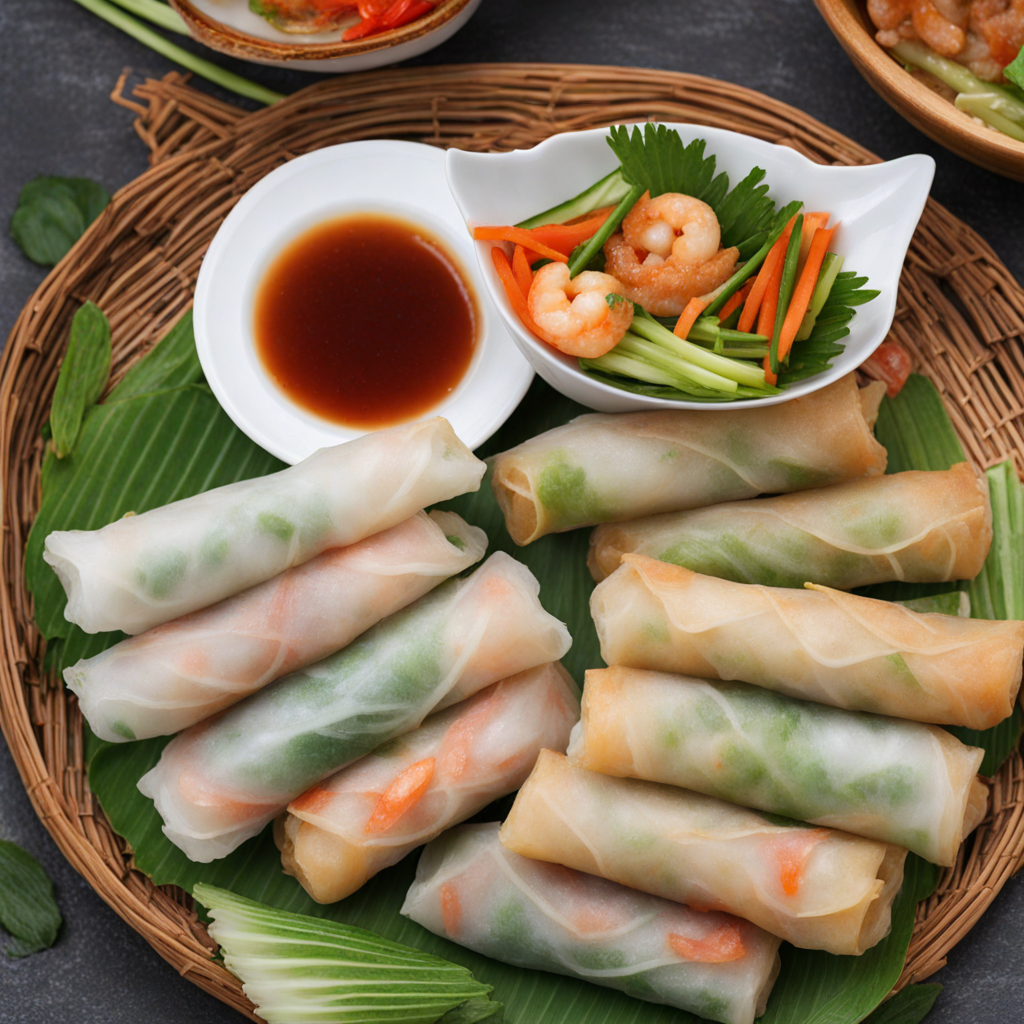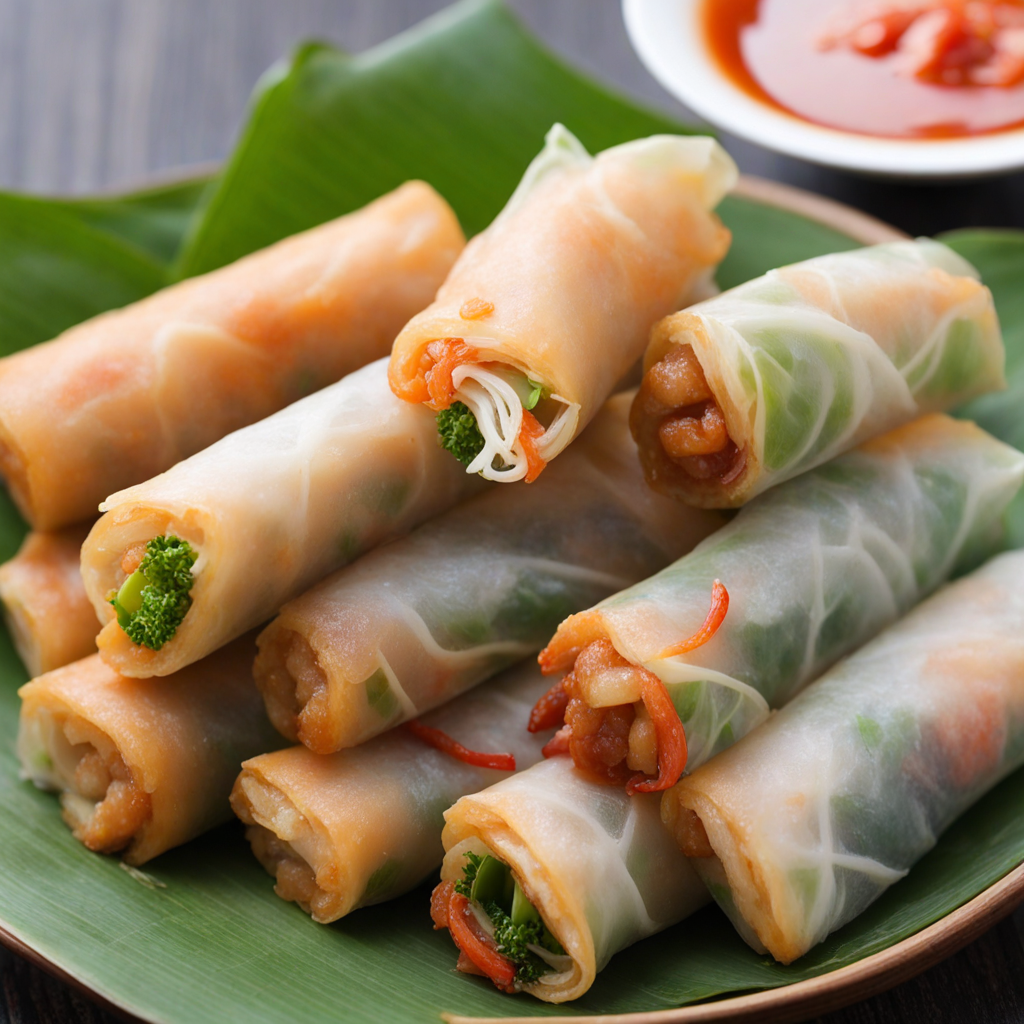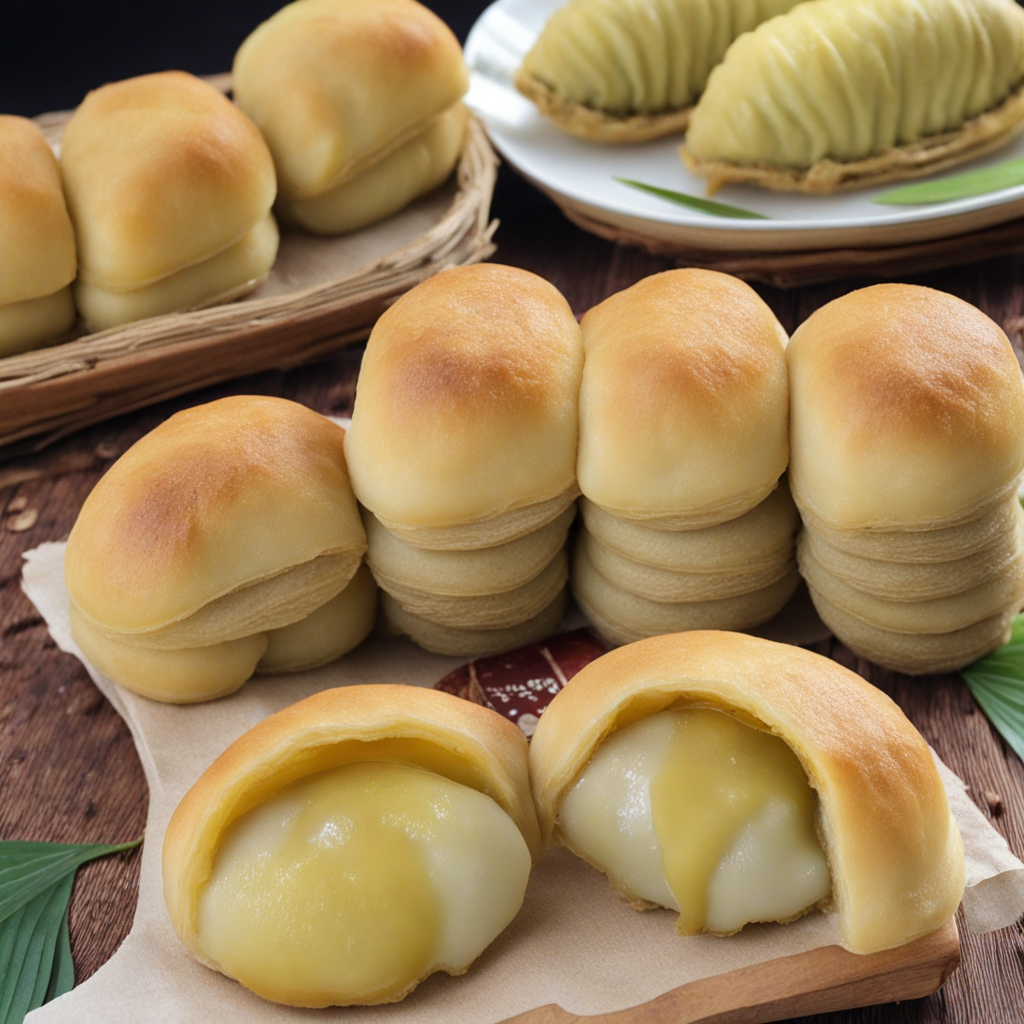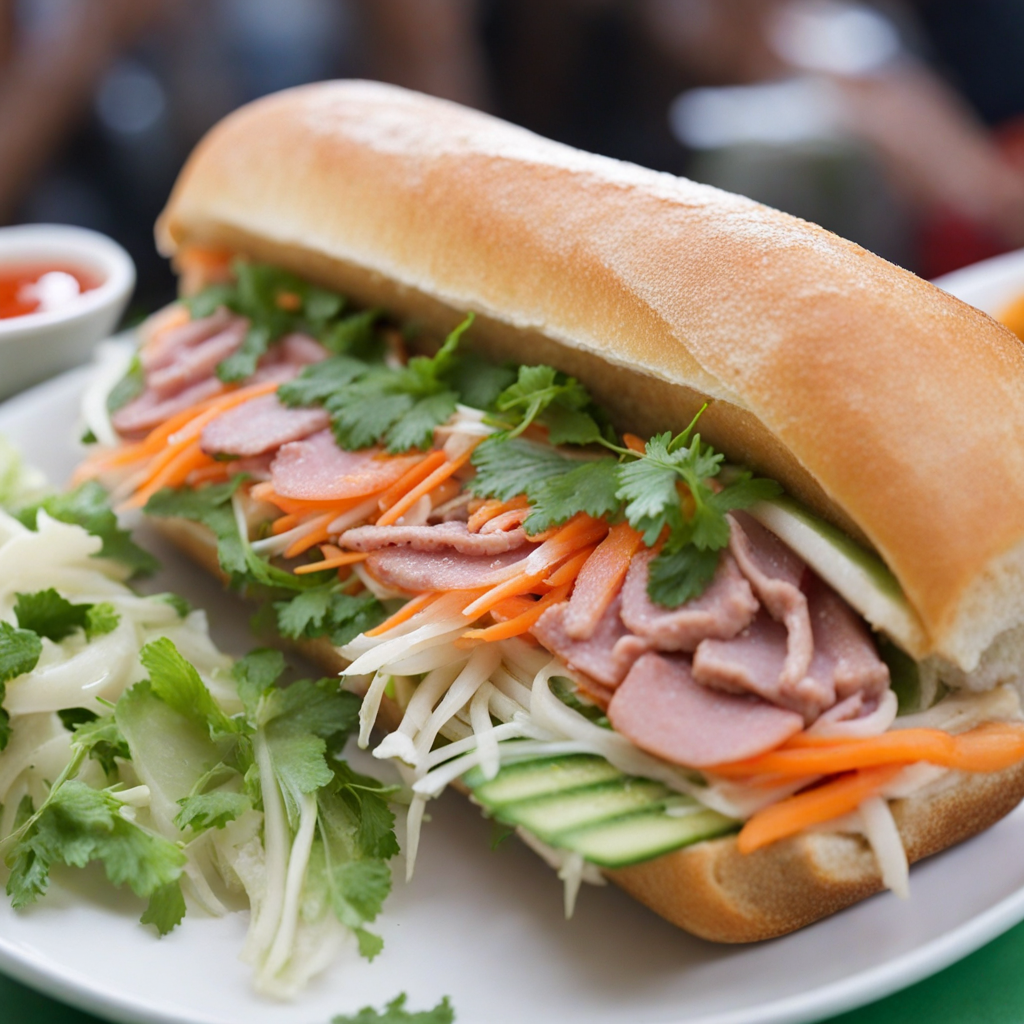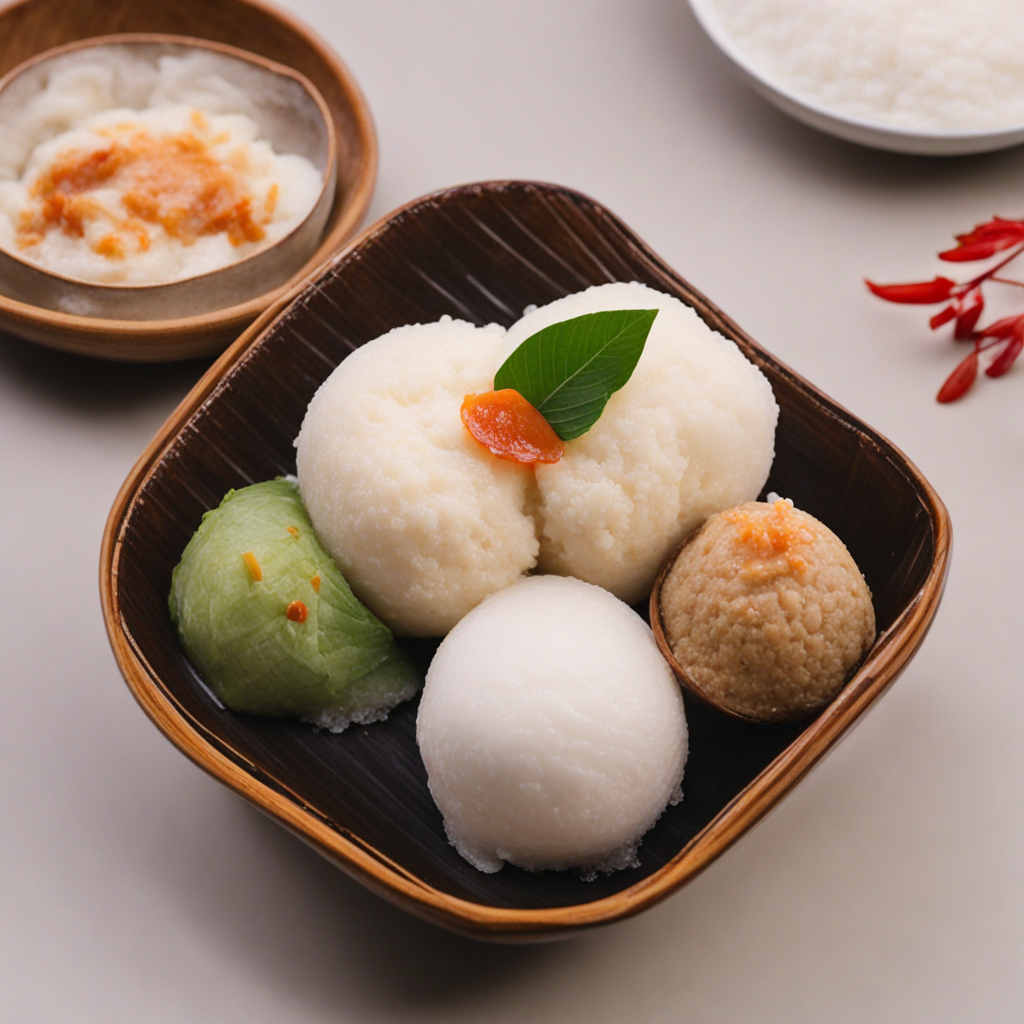Nem Ran
Nem Ran, also known as Vietnamese fried spring rolls, is a delightful culinary experience that tantalizes the taste buds with its crispy exterior and savory filling. Traditionally made with rice paper, these rolls are filled with a mixture of ground pork, shrimp, or chicken, combined with an array of fresh vegetables such as carrots, mushrooms, and vermicelli noodles. The filling is often seasoned with garlic, onion, and a touch of fish sauce, which infuses the rolls with a complex umami flavor that is both rich and satisfying. Once wrapped, the rolls are deep-fried to a golden perfection, creating a crunchy texture that contrasts beautifully with the succulent filling inside. The beauty of Nem Ran lies in its versatility; variations abound depending on regional preferences and family recipes. Some versions might include a medley of herbs like cilantro and mint, which elevate the freshness of each bite. Others may incorporate local ingredients, such as jicama or bean sprouts, adding a unique twist to the traditional recipe. Served hot, Nem Ran is usually accompanied by a dipping sauce made from fish sauce, lime juice, sugar, and chili, which enhances the dish's flavor profile and adds a zesty kick that balances the richness of the fried rolls. As you savor each bite of Nem Ran, you'll be treated to a harmonious blend of textures and flavors that represent the essence of Vietnamese cuisine. The fragrant aroma wafting from the hot rolls, the satisfying crunch as you take a bite, and the explosion of savory goodness from the filling create a dining experience that is both comforting and exciting. Whether enjoyed as a snack, appetizer, or part of a larger meal, Nem Ran is a dish that invites exploration and celebration of the vibrant flavors of Vietnam.
How It Became This Dish
The Rich History of Nem Rán: A Vietnamese Culinary Delight Origin: A Culinary Gem of the North Nem Rán, also known as "Chả Giò" in southern Vietnam, is a quintessential Vietnamese dish that has captured the hearts and palates of many both within and outside of Vietnam. This delectable dish, consisting of deep-fried spring rolls filled with a mixture of ground meat, vegetables, and vermicelli noodles, has its origins in the northern regions of Vietnam. The history of Nem Rán can be traced back to the early 20th century, although the concept of wrapping food in leaves or thin layers can be found in ancient culinary practices across Southeast Asia. In its earliest forms, the dish emerged as a practical solution for preserving food. The use of rice paper to encase flavorful fillings allowed for easy storage and transportation, which was particularly beneficial for farmers and travelers. The introduction of rice paper is believed to have been influenced by the Chinese, who have a long history of utilizing various wrappers for dumplings and spring rolls. This cultural exchange highlights the interconnectedness of Asian culinary traditions and the adaptability of Vietnamese cuisine. Cultural Significance: More Than Just Food Nem Rán is more than just a dish; it is a symbol of hospitality and celebration in Vietnamese culture. It holds a special place during festive occasions, family gatherings, and community celebrations. The preparation of Nem Rán is often a communal activity, where family members come together to chop ingredients, wrap the rolls, and share stories. This collaborative process strengthens familial bonds and passes down culinary traditions from one generation to the next. In Vietnamese culture, food is deeply intertwined with social rituals and customs. Serving Nem Rán to guests is considered a sign of respect and generosity, embodying the Vietnamese spirit of "tình người" (human affection) and hospitality. The dish is often accompanied by fresh herbs, lettuce, and a dipping sauce, allowing diners to customize their flavors and create a vibrant dining experience. The act of wrapping the Nem Rán in lettuce and herbs before dipping it into sauce symbolizes the importance of balance and harmony in life, reflecting the broader philosophical beliefs of Vietnamese culture. Development Over Time: From Tradition to Modernity As Vietnam underwent significant social and political changes in the 20th century, notably during the colonial period and the Vietnam War, the culinary landscape evolved alongside these transformations. Nem Rán adapted to reflect the available ingredients and the shifting tastes of the populace. For example, during the war, scarcity of resources led to creative improvisation, with cooks using whatever ingredients were at hand to fill the rolls. This adaptability meant that the fillings could vary widely—from traditional pork and shrimp to more modern interpretations using chicken, tofu, or even local seafood. Following the end of the Vietnam War in 1975, Vietnam opened its doors to the world, leading to a culinary renaissance. The global interest in Vietnamese cuisine surged, with dishes like Nem Rán gaining international acclaim. The introduction of Vietnamese restaurants around the world allowed for a broader appreciation of its flavors and techniques. Chefs began to experiment with presentation and flavor pairings, incorporating global culinary influences while staying true to the dish's roots. In the modern era, Nem Rán has found its way into various culinary contexts, from street food stalls to high-end restaurants. The dish has also inspired numerous variations, adapting to local tastes and dietary preferences. In many places, vegetarian options have emerged, featuring fillings made from mushrooms, tofu, and a variety of vegetables, allowing Nem Rán to cater to a more diverse audience. Culinary Techniques: The Art of Wrapping One of the defining characteristics of Nem Rán is the delicate technique involved in wrapping the rolls. Traditionally, rice paper is soaked in warm water to soften it before being filled with a mixture of ground meat, shrimp, vermicelli noodles, and finely chopped vegetables like carrots, mushrooms, and onions. The art of wrapping requires precision and practice, as the goal is to create a tight seal that will keep the filling intact during frying. The frying process is equally important, as achieving the perfect golden-brown crispiness is a hallmark of a well-made Nem Rán. Traditionally, lard or vegetable oil is used for frying, imparting a rich flavor to the rolls. The aroma of sizzling Nem Rán is often associated with home-cooked meals and evokes nostalgia for many Vietnamese people. Regional Variations: A Culinary Mosaic While Nem Rán is widely recognized in both northern and southern Vietnam, regional variations exist that reflect local ingredients and culinary preferences. In northern Vietnam, the traditional filling often emphasizes the use of pork, shrimp, and fresh herbs, with a focus on maintaining a balance of flavors. In contrast, the southern version, known as Chả Giò, may incorporate a wider range of ingredients, including more vegetables and sometimes even glass noodles, resulting in a sweeter and more complex flavor profile. Additionally, different regions have their own dipping sauces to accompany the rolls. In the north, a simple fish sauce with lime and chilies is common, while in the south, a sweeter sauce made with peanut and hoisin sauce may be preferred. This variety is a testament to the rich culinary diversity present across Vietnam. Nem Rán in the Global Culinary Scene In recent years, as Vietnamese cuisine has gained international recognition, Nem Rán has become a staple in Vietnamese restaurants around the world. Chefs continue to innovate while respecting traditional methods, creating fusion dishes that incorporate global flavors while maintaining the essence of the original. The dish's popularity has also led to its inclusion in various cooking shows, food festivals, and culinary competitions, further elevating its status on the global stage. Conclusion: A Dish that Connects Generations The history of Nem Rán is a testament to the resilience and adaptability of Vietnamese cuisine. This beloved dish, with its roots in practicality and communal spirit, has evolved over time, reflecting the rich tapestry of Vietnam's culinary heritage. From its origins in northern villages to its place in international cuisine, Nem Rán continues to be a symbol of hospitality, creativity, and cultural pride. As diners savor the crispy exterior and flavorful filling of Nem Rán, they partake in a tradition that transcends time and geography, connecting them to the heart of Vietnam's culinary story. Whether enjoyed at a bustling street vendor or a family gathering, Nem Rán remains a cherished dish that embodies the warmth of Vietnamese culture and the joy of sharing food with loved ones.
You may like
Discover local flavors from Vietnam


